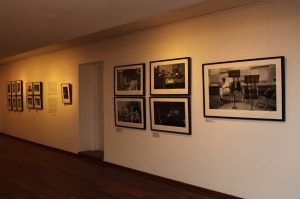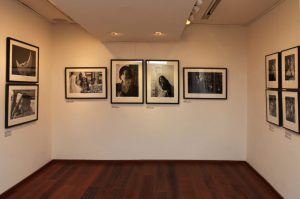Through the Lens of a Master: The Alipore Museum in Kolkata is set to unveil a landmark exhibition that celebrates one of the most iconic creative partnerships in Indian cinema—between legendary filmmaker Satyajit Ray and renowned photographer Nemai Ghosh. Titled “Light and Shadow: Satyajit Ray through the Lens of Nemai Ghosh,” the exhibition will open to the public on Friday, July 19, 2025, and will run through September 13, 2025.
Curated in collaboration with Delhi Art Gallery (DAG), the exhibition brings to life a treasure trove of visual documentation spanning more than two decades of collaboration between the two artists. It aims to not only showcase Ray’s cinematic brilliance but also spotlight Ghosh’s role in preserving the filmmaker’s creative legacy through photography.

A Tribute to a Unique Creative Bond
Nemai Ghosh met Satyajit Ray on the sets of Goopy Gyne Bagha Byne in 1969. What began as an initial curiosity soon turned into a lifelong professional association that lasted for over 25 years. Ghosh went on to become Ray’s unofficial yet ever-present photographic chronicler, capturing nearly every moment from behind the scenes—rehearsals, shot setups, quiet reflections, and candid portraits.
The photographs in this exhibition are drawn from a remarkable archive of more than 90,000 negatives, many of which have remained unpublished until now. Thanks to the digital restoration and archiving efforts led by DAG, a wide range of these images are now being displayed for public viewing for the first time in Kolkata.


Exhibition Highlights
The Alipore Museum will present:
- Black-and-white and colour portraits of Ray at work—on set, directing actors, composing shots, or sketching storyboards.
- Candid photographs capturing Ray in informal settings: playing the piano, working at his desk, conversing with actors, or simply pausing to reflect.
- Still frames from the making of classics like Aranyer Din Ratri, Seemabaddha, Ganashatru, Agantuk, and Jana Aranya.
- A rare section of colour photographs, displayed for the first time, offering a new dimension to the visual documentation of Ray’s life and work.
Each photograph is a narrative in itself, layered with emotion, artistry, and history. Together, they offer an intimate portrait of a man often considered a titan of Indian cinema, revealing both his public persona and personal presence.
Exhibition Design and Curation
Curated by DAG in association with experts in visual arts and cinema history, the exhibition will feature more than 100 prints—digitally restored and displayed in thematic groupings. These include:
- “On the Set”: Ray in action with his crew and cast.
- “In Thought”: Ray in moments of solitude or concentration.
- “Ray and His People”: Interactions with collaborators like Soumitra Chatterjee, Madhabi Mukherjee, Sharmila Tagore, and others.
- “Home and Beyond”: Rare images of Ray away from work—at home, with family, or in casual spaces.
The aim is not just to document, but to allow visitors to feel Ray’s world—the spaces he inhabited, the people he trusted, and the process behind his timeless creations.
Nemai Ghosh: The Man Behind the Camera
Born in 1934, Nemai Ghosh was a self-taught photographer who began his journey with a box camera and a passion for storytelling. His early days in theatre under the influence of Utpal Dutt shaped his observational sensibility, and his encounter with Satyajit Ray changed the course of his career.
Ghosh was never just a unit photographer. He was a silent observer who saw the rhythm, grace, and tension of filmmaking and captured them with authenticity. His photographs are known for their absence of artificiality—they are raw, spontaneous, and infused with cinematic energy.
His documentation of Ray earned him national acclaim, and in 2010, Ghosh was awarded the Padma Shri for his contribution to art and cinema. He passed away in 2020, but his legacy lives on through these timeless images.
Through the Lens of a Master: Ray Beyond the Frame
While Ray is widely known for his films, the exhibition also provides insight into Ray as an artist, designer, and thinker. Several photographs show him sketching costumes and set designs, or deeply immersed in scripting—a nod to his multi-dimensional creativity.
Visitors will also see Ray interacting with young assistants, laughing with cast members, or lost in a moment of introspection. This nuanced portrayal is what sets Nemai Ghosh’s archive apart. It doesn’t merely celebrate Ray the filmmaker—it reveals Ray the human.
An Important Cultural Moment for Kolkata
This exhibition is not only a celebration of Ray and Ghosh, but also a moment of pride for Kolkata’s cultural community. Ray, often called the city’s most gifted son, is revisited here not through the lens of cinema, but photography—another medium that preserves memory, emotion, and legacy.
The Alipore Museum, a relatively new entrant in the city’s heritage circuit, is positioning itself as a vital space for artistic exploration. With this exhibition, it continues its efforts to create meaningful experiences around Bengal’s cultural heritage.
Publication and Outreach
A companion photo book titled “Satyajit Ray: Through the Eyes of Nemai Ghosh” will be available at the venue. It includes essays by scholars and critics, including Pramod Kumar K.G., Sabeena Gadhioke, and Jai Arjun Singh, exploring the significance of Ghosh’s visual archive and his contribution to Indian visual culture.
Educational workshops, film screenings, and talks are also planned during the exhibition period to engage students, photographers, and cinema lovers.
Visiting Details
- Dates: July 19 – September 13, 2025
- Venue: Alipore Museum, Kolkata
- Timings: 10 AM – 6 PM (Closed on Mondays)
- Entry: Open to the public. Museum entry ticket required.
Why This Exhibition Matters
This exhibition is more than a tribute to two stalwarts. It’s a reminder of the power of collaboration, the beauty of still photography, and the eternal relevance of Ray’s vision. It invites us to pause, reflect, and look closely—just as Ghosh did through his lens.
In an age dominated by fast visuals and fleeting content, this quiet, graceful exhibition encourages viewers to engage deeply with images that speak volumes, even in silence.
External Resources
- Satyajit Ray – Wikipedia
- Nemai Ghosh – Wikipedia
- Delhi Art Gallery (DAG)
- Alipore Museum – Kolkata Zoo Official
Also read: Home | Channel 6 Network – Latest News, Breaking Updates: Politics, Business, Tech & More

